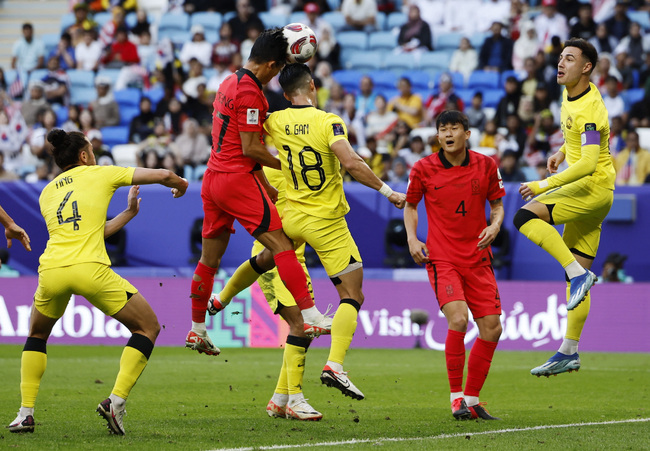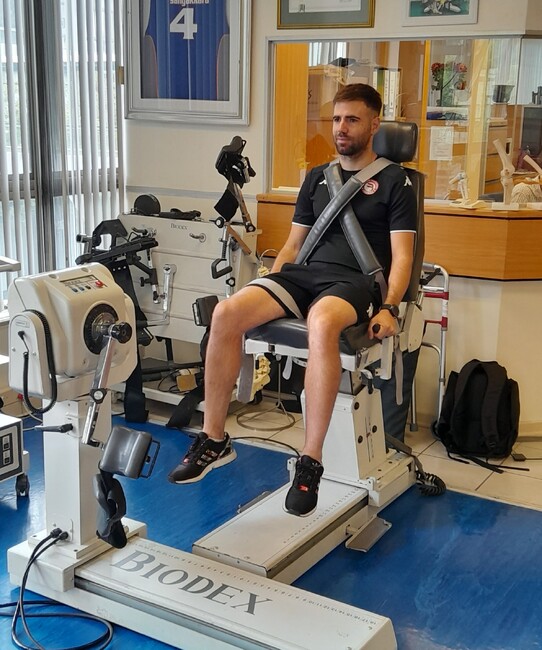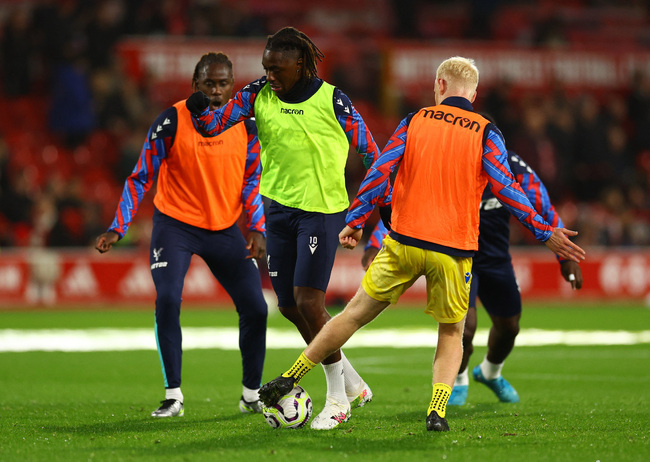You are viewing 1 of your 1 free articles
Highs and Lows: Understanding Response to Exercise
Eurico Marques delves into the physiological underpinnings of detraining and explores the differences between low and high responders to resistance training. Then, he discusses the implications for practitioners working with athletes during rehabilitation.
South Korea v Malaysia - Al Janoub Stadium, Al Wakrah, Qatar - South Korea’s Jeong Woo-Yeong scores their first goal. REUTERS/Thaier Al-Sudani.
Muscle loss, or detraining, is a phenomenon that occurs following the cessation of resistance training(1). This decrease in muscle mass and strength can significantly impact athletic performance, particularly in the context of injury rehabilitation. For athletes recovering from injury, detraining can hinder their return to sport and increase the risk of re-injury. Therefore, understanding the mechanisms of detraining and developing strategies to prevent it are crucial aspects of sports injury rehabilitation.
Clinicians must acknowledge the detrimental effects of inactivity on global and local tissue capacity. The local deficits are more prominent and form part of any standard rehabilitation plan. However, global deficits can be more challenging to identify and manage.
The physiological demands differ depending on the athlete’s level of sport, but detraining is independent of the athlete’s competitiveness. It is a complex cascade of physiological systems. To overcome the effects of immobilization, clinicians utilize resistance training to induce neuromuscular adaption(2).
Detraining
Muscle wasting and cardiovascular detraining are negative consequences of immobilization. The degree of detraining and atrophy depends on many intrinsic and extrinsic factors (see table 1)(3). The most extreme immobilization is bed rest. Within three days on bed rest, upright endurance exercise performance decreases, and muscle strength decreases within five days(4). During detraining, the decrease in muscle force is explained by both neural and muscular adaptations caused by the inactivity period.
For example, following an ACL tear, it is common for athletes to spend the first week resting and reducing their physical activities to a bare minimum because of pain and swelling. The same can be said for any other severe injuries, such as ankle sprains, rib fractures, etc. Therefore, any degree of unplanned and prolonged rest will impact physiological capacity.
However, not all athletes respond the same. Beginners may maintain their maximal strength without training for up to two or three weeks, and short-term detraining will lead only to minor changes. In contrast, prolonged detraining also results in muscle atrophy and further decreases in strength(2). For example, four weeks of detraining may induce a significant decline in muscle power output and eccentric strength compared to maximal strength after 16 weeks of resistance training(2).
Well-trained strength athletes can retain strength and muscle mass during two weeks of detraining(2). Short-term detraining may specifically affect eccentric strength and the size of the type II muscle fibers but doesn’t impact the other aspects of neuromuscular performance. Furthermore, muscle fiber cross-sectional area (fCSA) declines rapidly in strength and sprint athletes.
As with detraining, athletes may react differently to resistance training. Clinicians will relate that different athletes respond differently to similar strength and hypertrophy programs throughout rehabilitation. Certain athletes struggle to regain muscle hypertrophy at rates comparable to their peers. For example, stronger and more symmetrical quadriceps strength is associated with better ACLR surgical outcomes. However, not everyone responds the same, and quadriceps muscle atrophy correlates with muscle weakness and strength deficits(5). Therefore, restoring optimal quadriceps function following ACLR is an essential clinical goal and impacts long-term joint health.
How an athlete responds might be affected by gender, age, training history, physical activity level, and endocrine status. However, researchers at Pennington Biomedical Research Center in the United States showed that age, gender, and race only impact interindividual differences in training responses. Still, training history, environment, and genetic factors might have a more significant influence on the magnitude of adaptations(6).
High and Low Responders
Physiological factors affect the responsiveness to exercise training (e.g., changes in aerobic capacity, strength, or muscle growth). An in-depth understanding of the physiological factors is outside the scope of this article; however, we will uncover the clinically relevant points for practitioners. Individuals can be categorized into two groups: high and low responders.
Despite differences in study design and cohort inclusion, researchers at Auburn University in the United States define low responders as individuals who typically experience minor changes in skeletal muscle hypertrophy markers after undergoing resistance training. These markers include minor changes in quadriceps volume, ±4% increase in vastus lateralis (VL) muscle thickness, or ±0.5–1.2 kg increase in whole-body lean tissue mass. These seemingly marginal gains are still significantly different from pre-training levels when considering increases in VL thickness and whole-body lean tissue mass(3).
On the other hand, high responders experience robust increases in fCSA relative to low responders following training(3). They experience much more impressive increases in these metrics, such as a 20% increase in quadriceps volume, ±83% increase in fCSA, a 30% increase in vastus lateralis muscle thickness, and ±2.2–4.5 kg increase in whole-body lean tissue mass.
The difference in response to training is influenced by extrinsic and intrinsic factors (see table 1). Various major physiological mechanisms are involved in muscle strength and size development, such as the signaling of the mammalian target of rapamycin complex 1 (mTORC1) and increased ribosomal biogenesis(3). These physiological responses to resistance training modulate the upregulation of myofibrillar and muscle protein synthesis. Despite the lack of significant hypertrophic changes, clinicians must note that low responders still observe beneficial training adaptations(3).
However, just because high responders gain muscle mass quicker than low responders doesn’t mean they lose it slower during detraining. Researchers at the University of Jyvaskyla in Finland showed that after a 10-week progressive hypertrophic resistance training program, followed by six weeks of detraining, high responders tended to lose muscle mass quicker than low responders(2). Furthermore, they found that strength gains and maximal muscle activation adaptations may occur faster in high responders and that peak maximal dynamic strength may be reached after 2–3 weeks of detraining rather than immediately completing the program.
Identifying in which general category an athlete falls is important for clinical decision-making. An athlete’s response to rehabilitation is the hallmark of its success. Compliance is the most crucial aspect, but to achieve that, it depends on creating the best-fit (biopsychosocial) program. Furthermore, identifying if an athlete is a low or high responder will shape the programming decisions and return to sports time-frame expectations. This is critical to maintain motivation throughout what can be a difficult process.
Table 1: Extrinsic and intrinsic factors that affect response to training
| Extrinsic | Intrinsic |
| Sleep | Upregulation in muscle protein synthesis |
| Nutrition | Reduced skeletal muscle proteolysis |
| Exercise dosage | Increase in satellite cell-mediated myonuclear addition |
| Recovery strategies |
Does Fibre Type Matter?
Clinical Implications
The Biodex test uses a computer-assisted machine to assess the patient’s isokinetic strength.
Optimizing rehabilitation outcomes is not a simple process. The progress is rarely linear, and the complex interplay of biopsychosocial factors impacts results. Clinical reasoning is an essential skill for all clinicians working in the medical field. Clinicians must piece together a puzzle within the sports environment to ensure that athletes return to sport successfully. Some athletes will respond quickly to a strength and hypertrophy program, whereas others may not. Understanding physiological differences can help clinicians manage expectations, educate athletes, and create a program that matches their needs best.
References
1. Int. J. Environ. Res. Public Health 2022, 19,14048
2. Journal of Strength and Conditioning Research 35(6)/1500–1511
3. Front. Physiol. 9:834
4. Sports Med. 2023; 53(11):2135–2146
5. Asia-Pacific Journal of Sports Medicine, Arthroscopy, Rehabilitation and Technology 29 (2022) 35e42
6. Med Sci Sports Exerc. 2001 Jun;33(6 Suppl):S446-51; discussion S452-
7. Strength and Conditioning Journal 36(2):p 20-25, April 2014
8. Eur J Transl Myol. 2020 Sep 30; 30(3): 9311
Newsletter Sign Up
Subscriber Testimonials
Dr. Alexandra Fandetti-Robin, Back & Body Chiropractic
Elspeth Cowell MSCh DpodM SRCh HCPC reg
William Hunter, Nuffield Health
Newsletter Sign Up
Coaches Testimonials
Dr. Alexandra Fandetti-Robin, Back & Body Chiropractic
Elspeth Cowell MSCh DpodM SRCh HCPC reg
William Hunter, Nuffield Health
Be at the leading edge of sports injury management
Our international team of qualified experts (see above) spend hours poring over scores of technical journals and medical papers that even the most interested professionals don't have time to read.
For 17 years, we've helped hard-working physiotherapists and sports professionals like you, overwhelmed by the vast amount of new research, bring science to their treatment. Sports Injury Bulletin is the ideal resource for practitioners too busy to cull through all the monthly journals to find meaningful and applicable studies.
*includes 3 coaching manuals
Get Inspired
All the latest techniques and approaches
Sports Injury Bulletin brings together a worldwide panel of experts – including physiotherapists, doctors, researchers and sports scientists. Together we deliver everything you need to help your clients avoid – or recover as quickly as possible from – injuries.
We strip away the scientific jargon and deliver you easy-to-follow training exercises, nutrition tips, psychological strategies and recovery programmes and exercises in plain English.








